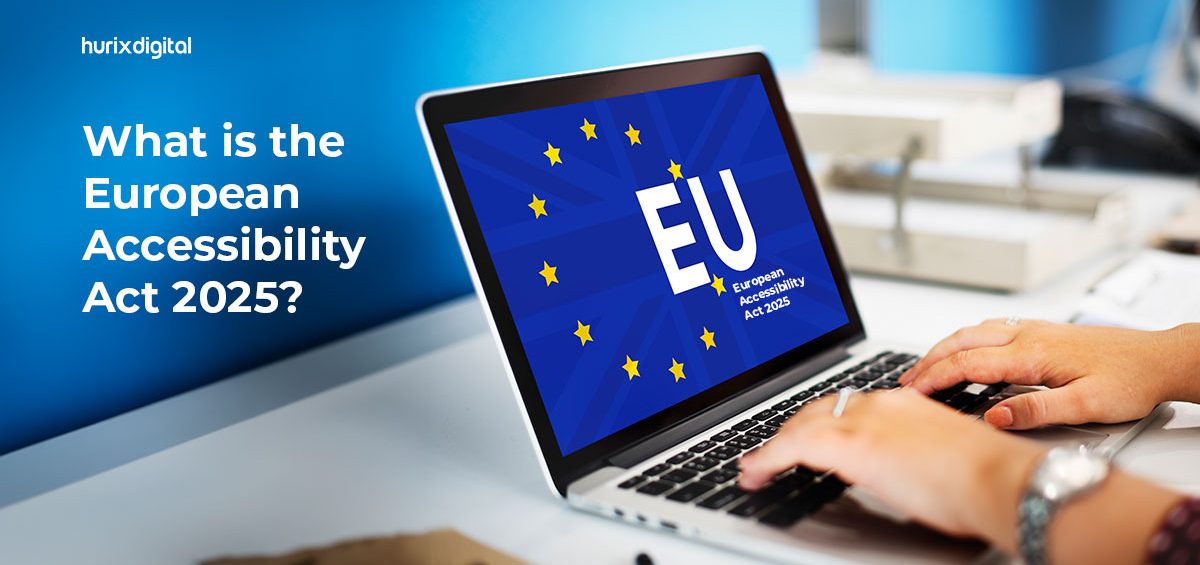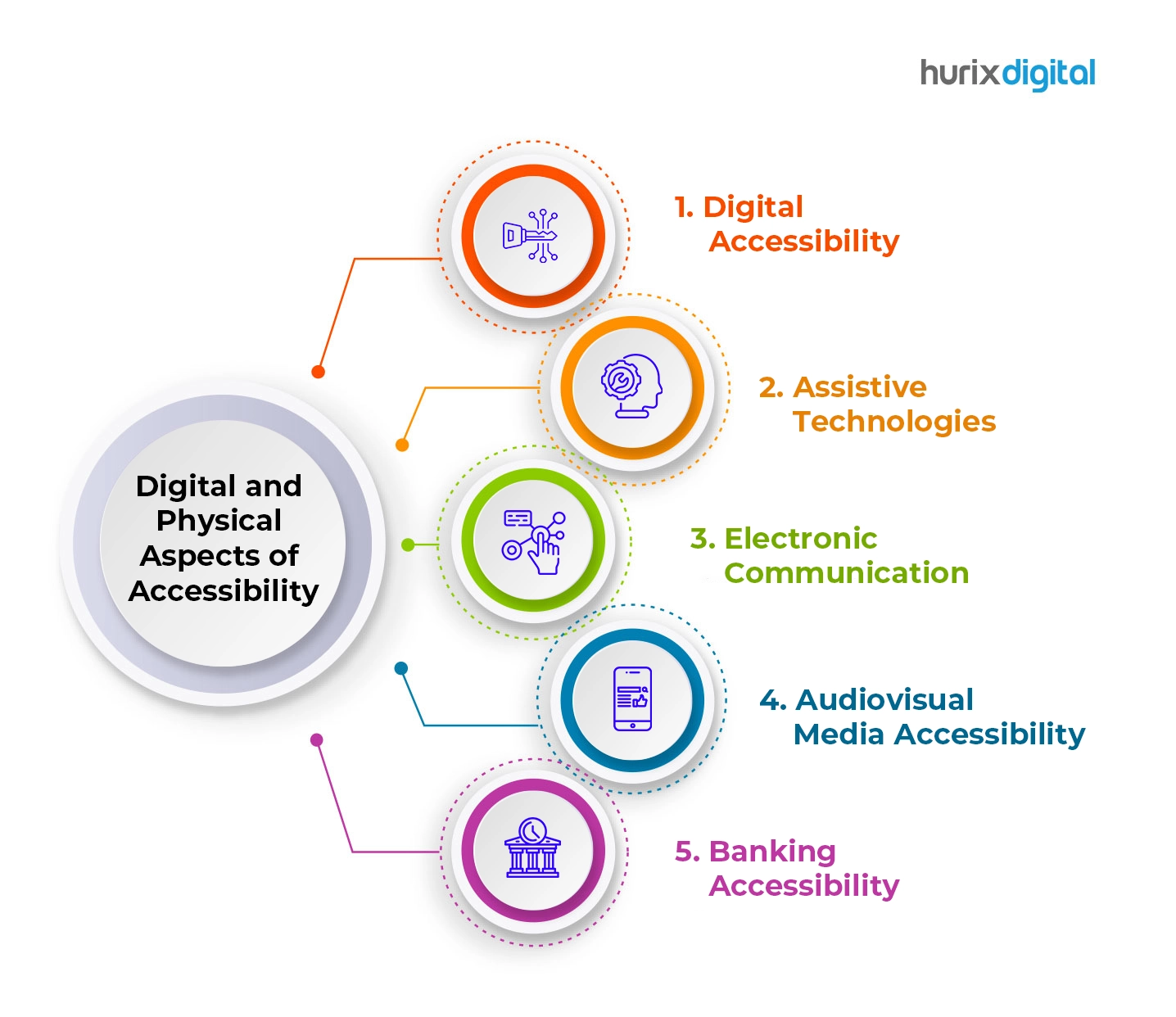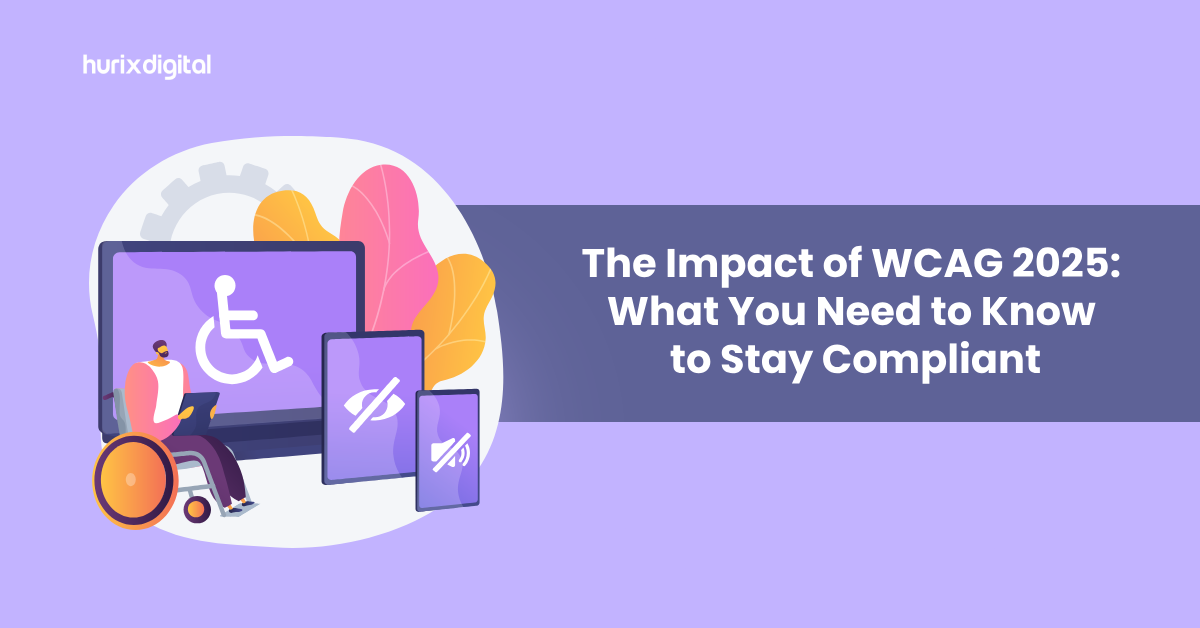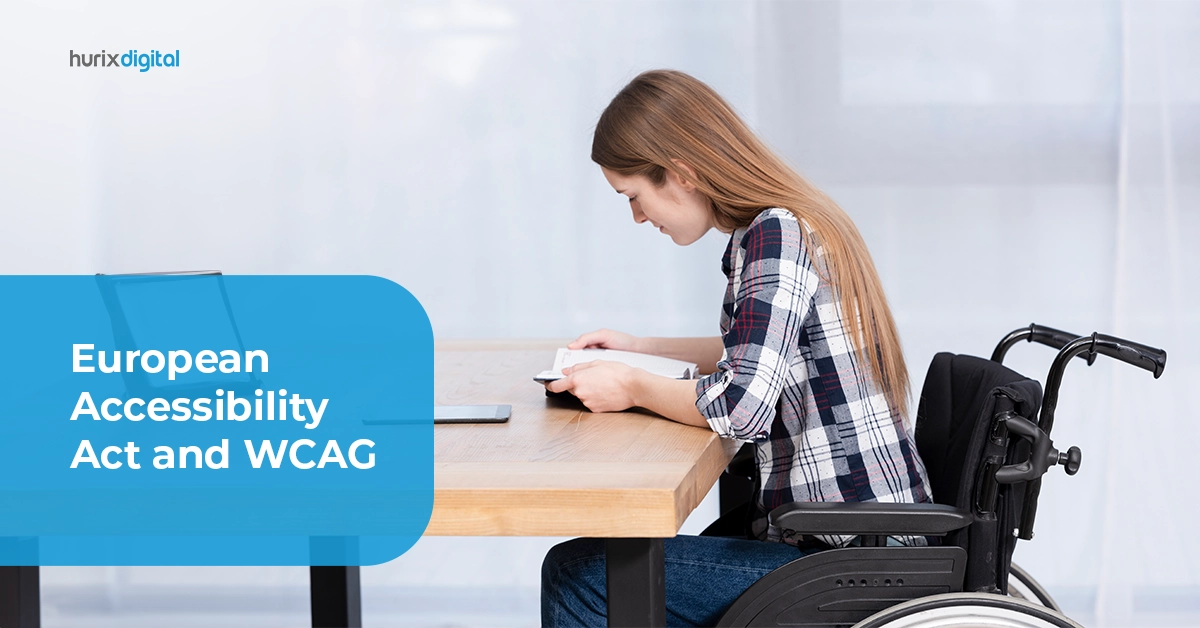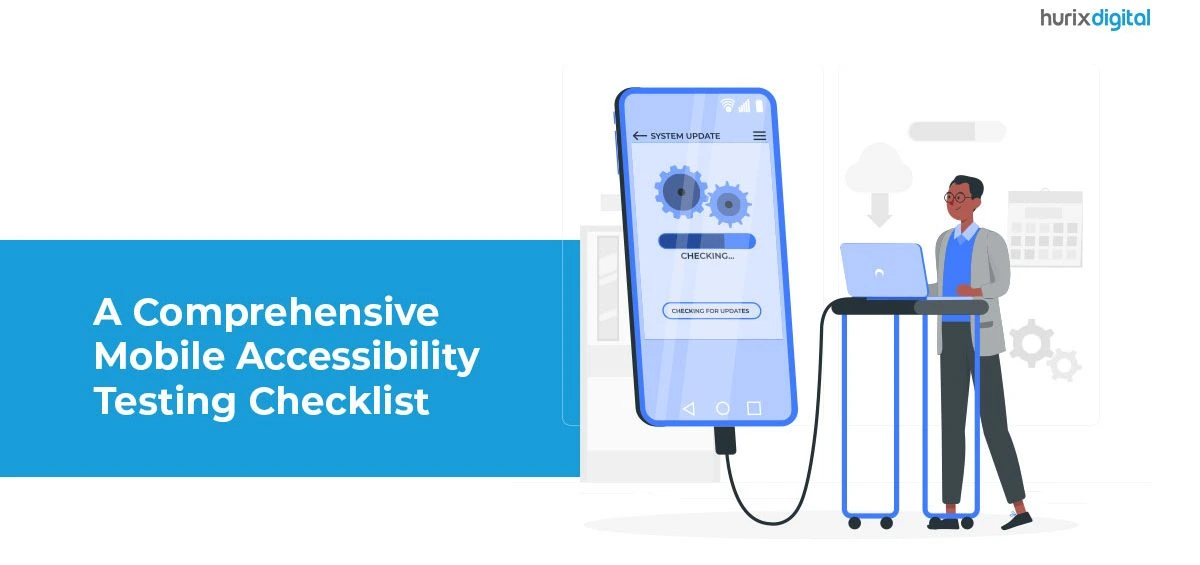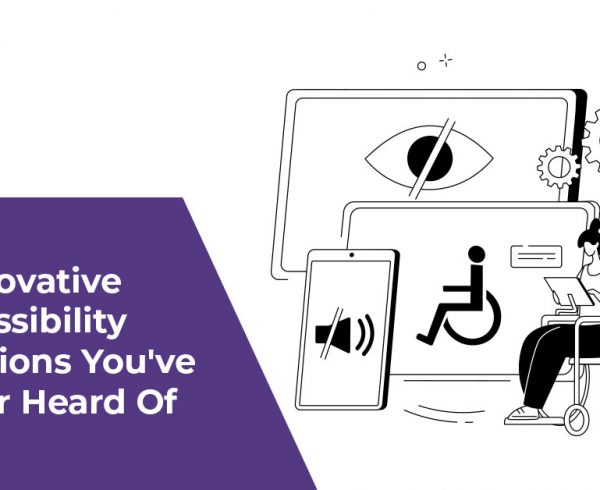Summary
This legislation aims to prioritize accessibility for businesses and organizations of all sizes. The European Accessibility Act 2025 will be implemented in June 2025, and companies have Entail years to prepare.
Often, we overlook the privilege of effortlessly using our mobile devices and computers. However, the situation differs for 135 million individuals with disabilities in the European Union (EU), according to the peer-reviewed journal The Lancet Regional Health Europe. Accessing these products and services poses significant challenges due to the various barriers they encounter.
Enter the European Accessibility Act (EAA), a groundbreaking initiative introduced by the European Commission to address the accessibility gap and the issue of marginalization faced by specially-abled individuals.
Scheduled for implementation in June 2025, the European Accessibility Act aims to prioritize digital product accessibility for businesses and organizations of all scales. But what exactly do these European accessibility standards entail, and why is it of utmost importance?
Furthermore, what are some common misconceptions surrounding EAA accessibility today? Most importantly, is your business adequately prepared for the upcoming changes?
Let’s explore this breakthrough law today.
Table of Contents:
- Why is Accessibility Important?
- Understanding the European Accessibility Act 2025
- What will the European Accessibility Act 2025 Entail?
- How Long do Companies Have to Prepare?
- The Bottom Line
Why is Accessibility Important?
According to the World Health Organization (WHO), an estimated 1.3 billion people (16% of the global population) live with a disability. These disabilities may include color blindness, limited mobility, and age-related impairments.
However, accessibility isn’t relevant only to people with disabilities. Situational challenges, such as struggling to browse a smartphone in bright sunlight, affect most of us.
When discussing website accessibility compliance, we’re talking about ‘design for all,’ a concept that ensures software and websites are built without barriers, allowing everyone to access them, regardless of their abilities.
There are two compelling reasons why the accessibility of digital products matters: ethics and upcoming legislation.
Entertainment, learning and development, personal finances, job hunting, booking a doctor’s appointment… in today’s interconnected world, everything is digital. This is why it is crucial to make digital services accessible to avoid marginalizing individuals and creating a social divide.
This initiative recognizes the need for inclusivity and equal opportunities for all and bridges the accessibility gap.
Understanding the European Accessibility Act 2025
As mentioned above, the EU Accessibility Act 2025 is a landmark law that mandates a few everyday products and services to be easily accessible for specially-abled individuals. The EU and all Member States made this initiative upon ratifying the United Nations Convention on the Rights of Persons with Disabilities.
The European Commission states the EAA will significantly improve the lives of at least 87 million individuals – almost one in five Europeans – with disabilities. This initiative aims to enable people with disabilities to participate fully in society.
Moreover, this Act will also benefit older people with temporary impairment. The new law will improve individuals’ access to e-books, websites, computers, online retail platforms, banking services, and much more.
Companies and customers will benefit from the Act’s standardized accessibility requirements. For companies, especially SMEs, it will ease cross-border trading and provide certainty for selling products and services throughout the EU.
Simultaneously, the law will drive innovation, offering customers a broader and more socially inclusive range of products at competitive prices. Moreover, common accessibility requirements benefit everyone in environments with low light or high noise.
For instance, ATMs equipped with visual and audible signals can assist all individuals, making everyday experiences more user-friendly and inclusive.
What will the European Accessibility Act 2025 Entail?
One common misconception about accessibility is that it only involves font size and contrasting colors, whereas the most critical aspects lie within the code. Screen readers, essential for differently-abled individuals, read the code, not just the visual elements. Writing accessible code is a crucial skill for the future.
The EU’s accessibility law will follow the established WCAG standard, organizing guidelines under four principles: perceivable, operable, understandable, and robust. These guidelines will now apply to companies in the private sector, expanding beyond their current application in the public sector.
The EAA has a comprehensive scope, addressing both digital and physical aspects of accessibility. Let’s explore the key areas covered:
- Digital Accessibility: This means ensuring websites and digital platforms are accessible to everyone. These platforms are crucial channels for ecommerce, communication, and information dissemination. The focus is on adhering to the Web Content Accessibility Guidelines (WCAG), guiding for creating accessible digital content.
- Assistive Technologies: The EAA recognizes the importance of assistive technologies and calls for compatibility with various devices and software like screen readers, magnifiers, and voice recognition tools.
- Electronic Communication: Modern communication heavily relies on telephony services like smartphones and mobile devices. The law wants to make these services accessible to individuals with disabilities.
- Audiovisual Media Accessibility: It also considers audiovisual media- guaranteeing that TV equipment and services offer features such as closed captions and audio descriptions to accommodate people with hearing and visual impairments.
- Banking Accessibility: The EAA strongly emphasizes financial inclusion, making accessible banking services a priority. The goal is for individuals with disabilities can manage their finances independently and with ease.
By implementing these measures, the EAA seeks to create a more inclusive society where all individuals can fully participate and access digital and physical services without barriers.
Also Read: The Ultimate Guide to WCAG Compliance for the Website Developers
How Long do Companies Have to Prepare?
With a deadline set for June 28, 2025, companies must act promptly to ensure compliance with the European Accessibility Act, Forbes indicates. Though the timeframe may appear generous, the intricacies of meeting the new requirements demand an early start.
A comparison to the General Data Protection Regulation (GDPR) adoption highlights the challenges companies faced when given only two years to prepare. Taking immediate action will help companies avoid potential penalties and ensure accessibility for everyone.
Here are some of the steps companies can take to prepare:
- Conduct Regular Audits: Seek assistance from web accessibility experts to audit your website and digital platforms comprehensively. Their expertise will identify any website accessibility gaps and provide valuable solutions for improvement.
- Educate Everyone On Inclusivity: By educating your employees about accessibility guidelines and requirements, you foster an environment of ongoing compliance.
- Add Accessibility Enhancements: Act upon the audit findings and implement essential upgrades to ensure your digital platforms are fully accessible. This may involve incorporating alternative text for images, adding captions to videos, and enhancing keyboard navigation.
- Conduct Regular Tests And Stay Updated: Businesses must proactively make necessary updates as technology and guidelines evolve.
Also Read: Why Accessibility Training Matters: The A11Y Collective and the European Accessibility Act
The Bottom Line
The EAA 2025 represents a significant step toward building inclusivity and bridging accessibility gaps among individuals. By following guidelines, educating people, and encouraging innovation, the new law guarantees that no individual is left behind, irrespective of their condition.
If your organization wants help achieving accessibility compliance and embracing inclusivity, Hurix Digital is here to make the journey easier for you! Contact one of our specialists to learn about and implement the guidelines in your digital platforms.
Together, we can ensure every individual’s abilities are recognized and celebrated!


